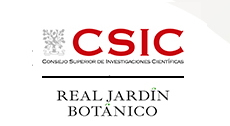Scientific Area
Disentangling the drivers of diversity at multiple taxonomic scales in the rapid radiation of the South African Protea
ID: 613 / 452
Category: Abstract
Track: Pending
Proposed Symposium Title: Disentangling the drivers of diversity at multiple taxonomic scales in the rapid radiation of the South African Protea
Authors:
Nora Mitchell1, Kent E. Holsinger2
Affiliations: 1 Department of Biology, University of Wisconsin – Eau Claire, Eau Claire, WI USA 2 Department of Ecology and Evolutionary Biology, University of Connecticut, Storrs, CT USA
Abstract:
The genus Protea of South Africa is an iconic plant radiation with remarkable variation in growth form, leaf functional traits, and pollination syndromes. Their center of diversity and center of origin is the Cape Floristic Region of southwestern South Africa, a biodiversity hotspot, and a region characterized by multiple climatic gradients, substantial edaphic heterogeneity, fire-dominated ecosystems, and multiple mountain ranges resulting in both topographic variation and geographic isolation. Here, we synthesize our research on the drivers of diversity in Protea across taxonomic scales, asking the extent to which the radiation has been driven by adaptive versus nonadaptive mechanisms. We investigate these questions 1) across the genus in a phylogenetic context, 2) within a restricted clade, 3) across populations within a single species, and 4) between hybridizing species at a single site. We use a variety of approaches, including phylogenomics and Bayesian phylogenetic frameworks, common garden studies assessing trait differentiation and gene expression, in situ measurements of plants growing across climatic gradients, and population genomics tools to assess the roles of geographic and environmental differences.Our findings present a paradox, where we detect trait-environment relationships at multiple scales (suggesting that adaptive processes underlie the radiation) while our population genomic evidence points to a potential role for geographic isolation (suggesting that nonadaptive processes underlie the radiation). Moreover, within a given site, many Protea species often co-occur, and co-occurring species often represent wildly disparate morphologies.We attempt to reconcile the roles for these difference mechanisms and point to future work to disentangle the effects of adaptive processes (driven by both biotic and abiotic interactions) as well as nonadaptive mechanisms.




